
Small leaved lime: A tree that shares its heart with us during the Big Forest Plant
Trees are the true champions of nature. They sustain wildlife, purify our air, and are absolute wonders to marvel at all year round. The Big Forest Plant is the perfect time to celebrate our trees and remind everyone about all they do for us and the planet.
Read on with Volunteer Manager Jonathan to learn more about all the incredible things trees do, in particular the small leaved lime and why it lends its heart to the Forest.
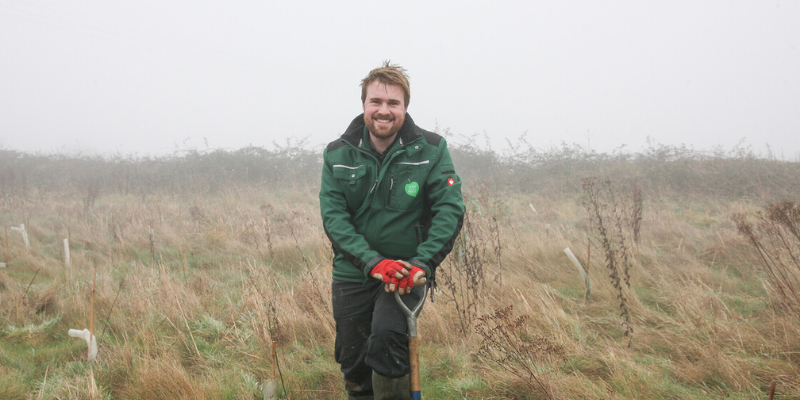
This planting season I am keen to share with you the story of a young tree, watching it grow, and demonstrating the many incredible ways in which we will interact with this tree through its life. Trees can tell us an amazing story about their past, and of humanity's history. Every tree has a story to tell, of the things it has seen and experienced, of every branch cut and twig snapped.
With over 30 species of British broadleaf tree in the Heart of England Forest it is hard to choose just one species to focus on! Each has its own unique benefits for the environment, wildlife, and for people.
However, after some deliberation, I wanted to highlight the tale of the true heart of the Heart of England Forest, the inspiration for our charity's logo, the story of a small leaved lime (Tilia cordata).

From a seed
On a crisp autumn morning, a team of staff and volunteers are out in one of our woodlands. With crunching leaves under foot and warm breath visible on the air, they are searching for seeds from which to grow new trees. A sustainable part of our woodland creation - fortunate for us that trees do in fact grow on trees!
Small leaved lime seeds can be collected direct from the tree. On this morning our team delicately removes the seeds from the tree by hand, and safely stores them in a bucket as they explore the woodland. And here, at the bottom of one of these buckets sits the seed of our little lime, with a long journey ahead of it.
The seeds collected from small leaved lime are known as 'orthodox'. These seeds can tolerate the harsh conditions which we would naturally see over our winter, allowing us to dry or freeze the seeds to be stored at our tree nursery until they are needed. Other seed, such as acorns from the majestic English oak (Quercus robur) are known as 'recalcitrant', seed which want to germinate quickly and do not tolerate freezing or drying but can be kept cool to slow the germination rate.
After the orthodox seed of our little lime tree has been collected by our volunteer team, processing the seed takes place, usually the same day. This includes removing leaves and other non-seed items (including plenty of surprised spiders!), leaving behind just the seed that we will preserve until it is time for it to go in the ground. The seed of our little lime, amongst many others, is placed in the Forest’s tree nursery, where it lays over winter, sleeping if you will until it is time to wake up.
While the little lime seed is in a deep slumber, our nursery team prepares the soil, creating beds for the seed to grow in. The seed is then separated from its other fellow seeds, and is carefully sown, and tucked into the freshly prepared soil. The seed is vulnerable here on its own, with nothing now other than instinct. However, our nursery team offers the seeds protection with a layer of fleece to keep birds from an easy snack - after all, plenty of viable and nutritious seeds were left on the trees to feed them throughout the winter.
One morning, a small pair of leaves on a delicate stem emerge from the ground. Our young tree has made it and started the next chapter in its journey. Over the coming months our volunteer team busily weeds and waters our saplings, ensuring each tree has the optimum conditions to not only grow in but thrive. Our little small leaved lime will live within our tree nursery for one to two years until it is a suitable size to plant out in the perfect place in the Heart of England Forest.
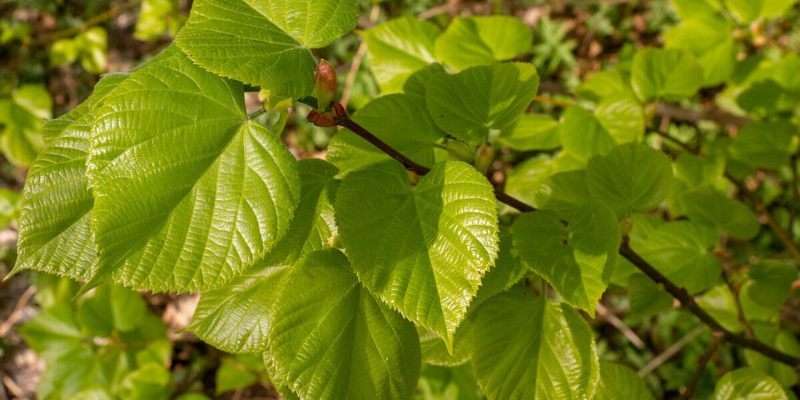
Our small leaved lime as a young tree
Now two years old, and despite coming from a very tiny seed in the bottom of a bucket, our small leaved lime is a healthy, knee-high sapling.
Winter is nearly here, and a team of keen volunteers is ready for the beginning of another tree planting season. Gently transported to its new home in the perfect spot in the Heart of England Forest, the young lime is delicately placed into the ground, with great care taken to protect its roots, and ensure it has the best chance of survival.
After a busy morning's work, 500 new trees are planted in the ground, including our young lime, a great job well done!
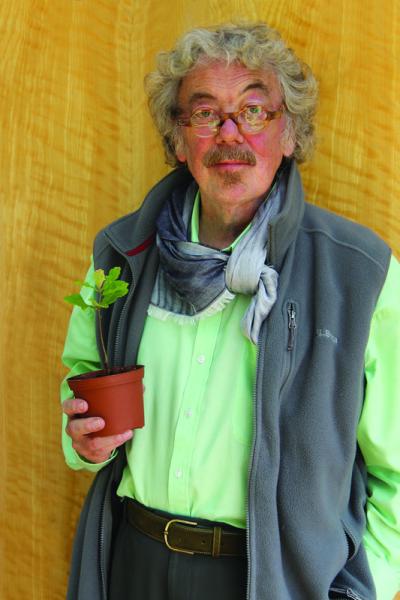
What is next for our little lime?
Well for now, time is what is needed for the tree to establish itself and grow! Each tree will be left for around 10 to 15 years, with regular checks from our forestry and volunteer teams to ensure that the tree is growing well and that its protective recyclable guard is serving its purpose.
Come with me ten years into the future and see that our small leaved lime is now well over head height. with a stem thickness of roughly the size of your wrist and lush green. It is healthy and quite remarkable to look at. On a summer's day a group of volunteers will arrive en masse to clear the protective tree guards, leaving behind nothing but woodland.
The tree will now be left to grow, facing challenges of extreme weather changes, hungry wildlife, and competing with nearby trees for sunlight and soil nutrients. But despite the struggles, our maturing tree will be a part of some of the most wonderous ecosystems here in the heart of the UK. Caterpillars and aphids will feed upon its leaves and sap, small birds will sit and sing in its branches, and a speckled wood butterfly will perch on a leaf to take in the day's sunlight. This small leaved lime will enhance wellbeing of our daily walkers that visit the Forest, passing it with their dogs and families. Children play around the tree, trying to hide behind its not quite large enough stem, and pointing out its leaves that look like a heart. While maybe not an icon of its own just yet, our lime is already on its way to playing a vital part in the overall woodland.
One day a great spotted woodpecker creates a hole in the side of our tree's trunk, a family watch and listen as the bird creates this hole as it seeks insects residing inside of our tree's bark. This is the first time they have seen this wonderful woodland bird, and it makes their day, the children imitating the bird's drumming sound on other nearby trees. This new feature will create decaying wood in the future, allowing the tree to host so much more life.
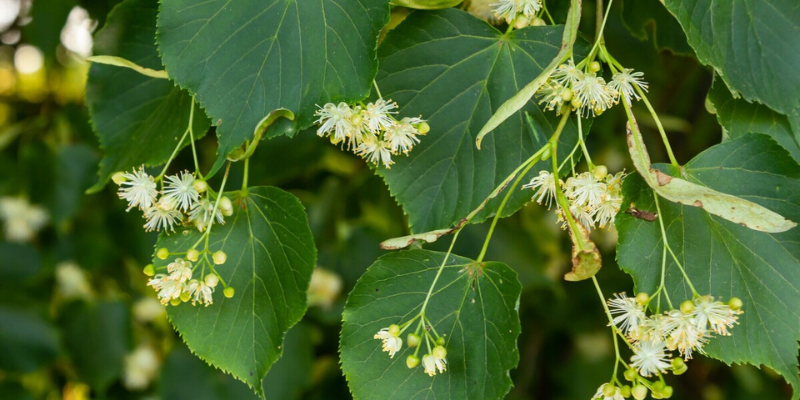
Ancient trees, death and decay
Our beautiful lime tree has now been in the Forest for hundreds of years. It has outlived many of the trees it was planted among, but each has lived its story and added something of great value to our woodlands.
This tree's generous canopy provides shade on a warm spring day to a team who have been out busily surveying the woodland's wildflower and flora species, which now contains a healthy mix of specialist woodland species such as bluebells and wood anemone. The woodland has come a long way from an open field!
Full of decaying wood, our small leaved lime tree is now a host to hundreds of saproxylic species, all of which rely on this decaying wood to live and thrive. Mosses and fungi can be found in all kinds of nooks and crannies of our lime. Birds of prey use its branches to survey the woodland for their next catch, woodlice, and beetles crawl in every crack in the tree's bark, enjoying the plentiful supply of decaying wood for them to live on. The woodpecker's hole from decades ago is now a large crevasse, home to a family of tawny owls, who bring the woodland to life at night with their hoots and calls.
Years continue to pass and one day our tree does not put on a single leaf in the spring.
Sadly, the small leaf lime we have followed through its journey has reached the end of its life. Despite having died, it still thrives with life, continuing to decay, providing even more habitat for woodland inhabitants and enriching the soil. Some of its fallen branches are taken by a volunteer team into a nearby woodland, recently established, to help kick start many of these natural woodland processes which our established woodland has enjoyed for years. Its canopy collapses to the ground, allowing sunlight to once again cascade down to the woodland floor.
This story may be over, but another story is about to begin. Near the base of our small leaf lime a tiny sapling is taking advantage of the newly created clearing, basking in the morning sun…
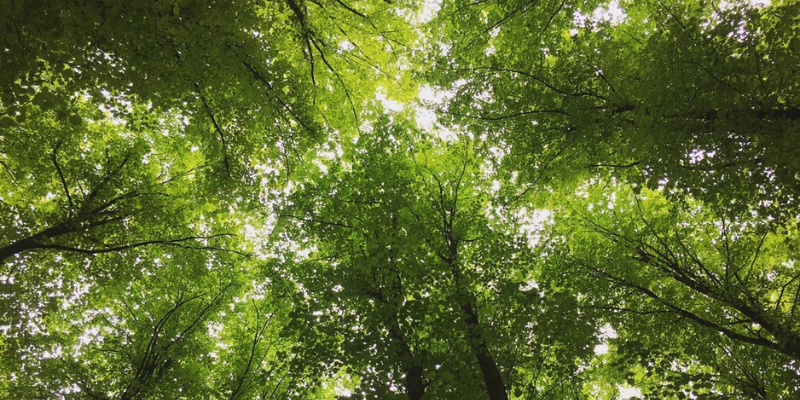
Reflection
What a wonderful life our small leaf lime tree has lived! It has seen so much change, from seed to an ancient tree as part of a healthy established woodland. So many individuals have seen this tree grow, worked around it, appreciated its beauty, and benefited from its impact on our local landscape.
Every tree in the Heart of England Forest, old and new, has a story. Next time you are out in the Forest, take a closer look at a nearby whitebeam (Sorbus aria), sweet chestnut (Castanea sativa), or field maple (Acer campestre)… what is the tree's story? What has it seen? What experiences will it see in the near and distant future? How will we influence this tree's future and how will it influence us?
Become a part of a tree’s story this National Tree Week and join our volunteer team in making lasting memories to the ongoing growth of the Forest.



